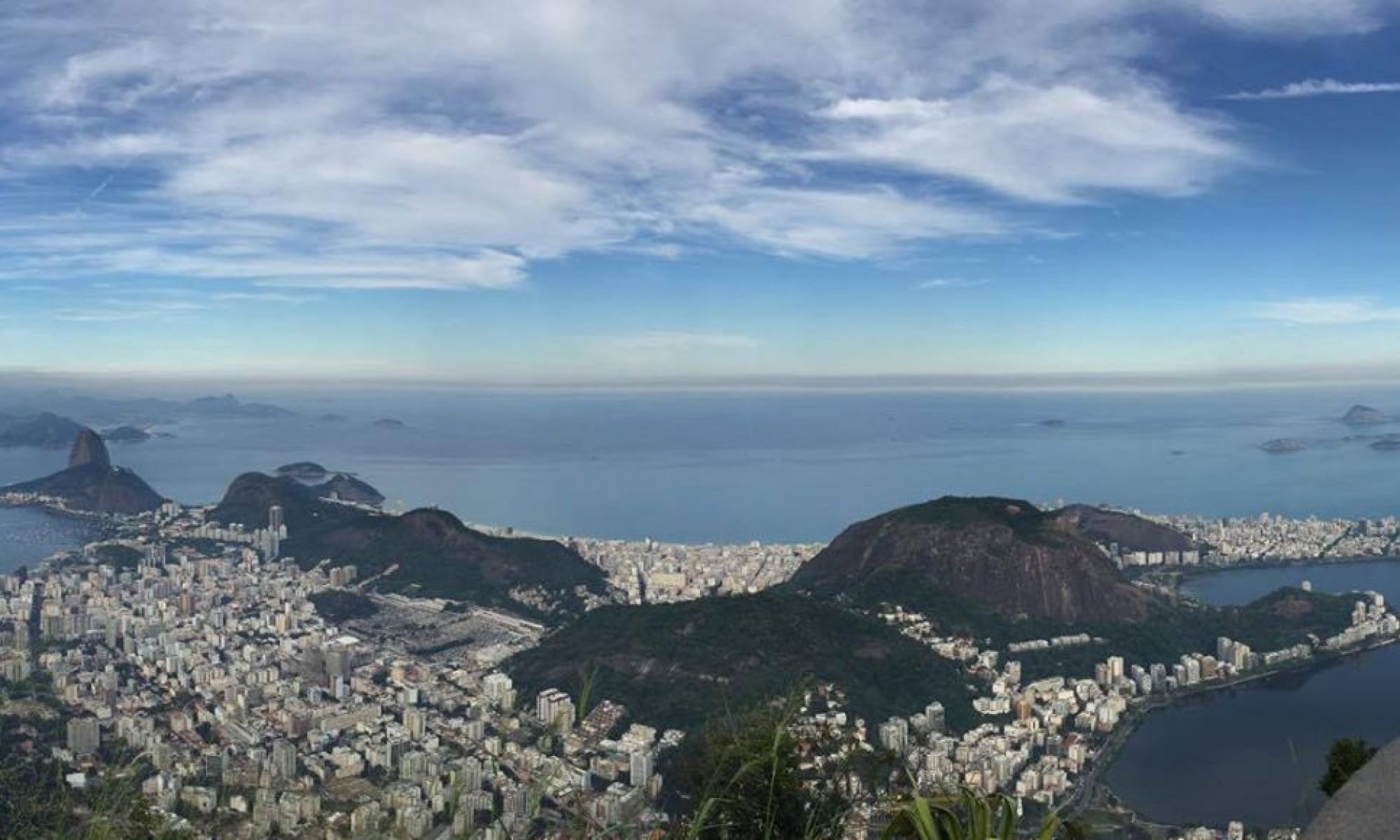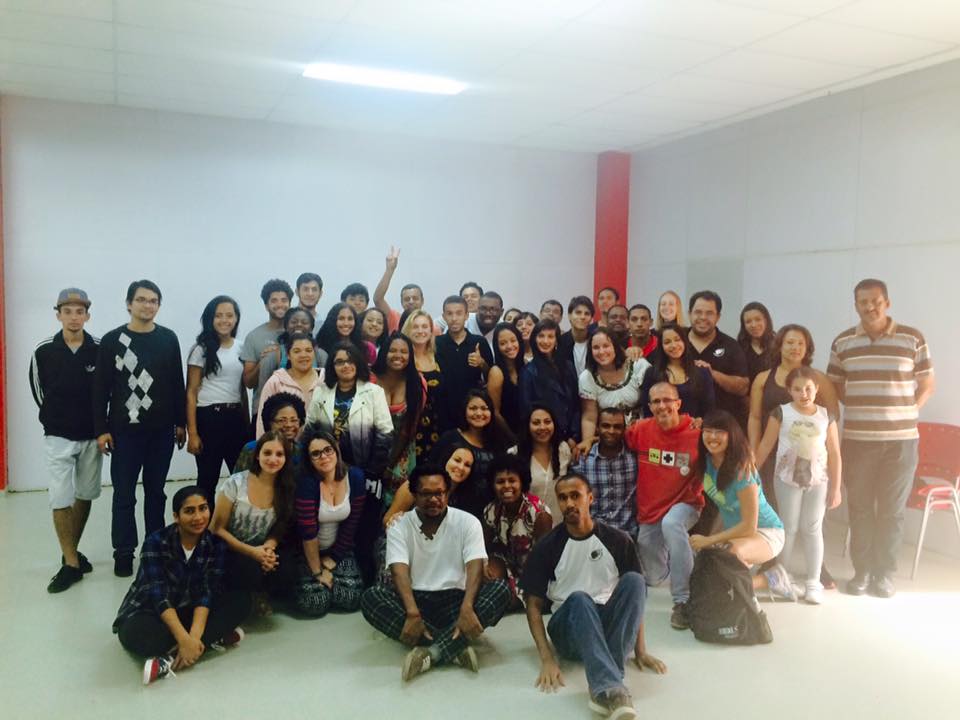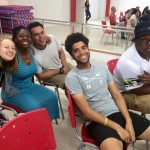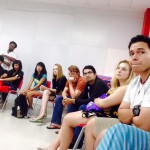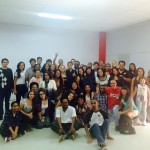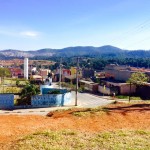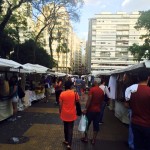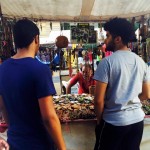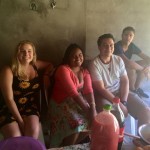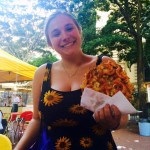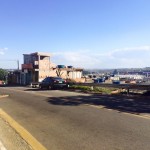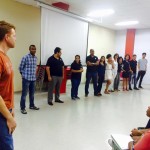June 14, 2015
By: Ravonelle Yazzie
It was slightly windy this morning when we left the hostel to visit the city of Guarulhos for our first scheduled activity with students from the non-governmental organization Curso Comunitario Bonsucesso. While trying to find the entrance into the building, we were mesmerized by a handful of blue and purple flying kites in the sky. In the midst of finding out if a game of kite fighting was in play, Professor Brito and Professor Barnum herded the group into the building. Kite fighting is a game where kite flyers battle to cut off each other’s kite line. The competition is usually held in the communities, known as the “favelas.” We were first greeted with delicious hot coffee and tea before the introduction of the Curso Comunitario Bonsucesso and the Q&A panel. Curso Comunitario Bonsucesso is a non-governmental organization that aims to teach young citizens their rights, help them not only to get an education but also to develop a critical mindset. The organization started in 2000 as part of EDUCAFRO and has been a volunteer-based program since. They currently have over 50 volunteers who help in areas such as administration, the kitchen, and in classrooms. They highly support education because it is their way of getting access to their citizenship rights. Many supporters noted that this program helped them overcome challenges and has positively impacted their lives.
Our conversation began after we arranged ourselves seated in a big circle. Our group and individuals from the Curso Comunitario Bonsucesso group participated in a moment of exchange of experiences relating to race issues, college life, and living in the U.S. and Brazil. We were asked questions that ranged from how the education system works in the U.S. to how active we are within our own communities to our perceptions of Brazil as a country and U.S. relations with Cuba. Each of us in the group contributed to the discussion as questions continued to come in. Unfortunately after an hour and half of conversation, we had to end. On the bright side, we had lunch nearby the area with Professor Brito’s family. They made us authentic Brazilian food that consisted of rice, feijao de corda (black-eyed peas), green salad, and churrasco (grilled meats). We also drank fresh suco de goiaba e maracuja (guava and passion fruit juice). While eating I could not wrap my head around how much time and effort it took to make the mass amount of food we were offered. Given the language barrier, I only hope that our hugs and thank was enough to let our hosts know that we greatly appreciate their hospitality. Since day one in Brazil, we have been welcomed with open arms.
Our second scheduled activity was a visit to the República Square Market. We took a 20-minute bus ride and like most days we stood hip-to-hip with other passengers. During this time, an interesting conversation took place with Professor Brito, several Bolivian men and Edgar Estrada (another student on the trip). The Bolivians had emigrated to Brazil and currently worked in sweatshops where they sew from 7:00 a.m. until 10:00 p.m., five days a week. They engaged in an open discussion about the lifestyle in the United States. From what Edgar understood, the Bolivian man had a very specific narrative of the typical “American” lifestyle. In short, the gentleman had a very “Hollywood” perception of the U.S. — expensive cars, nice clothing, palm trees, good weather, and easy access to material resources. Little did this man know that the cultural productions mass media portrays of the U.S. are not indicative of its reality. Edgar mentioned how this could be a troubling misconception for thousands of immigrants who are sacrificing their lives by migrating into the U.S. every year who believe in the “American Dream.” He also asked about the job market and how accessible resources are with the wages given to blue-collar workers. The student explained that it is difficult to live a minimum wage salary in the United States. With that conversation in mind, we then headed to the República Street Square Market for souvenirs some of which were hand made and for some typical Brazilian street food.
